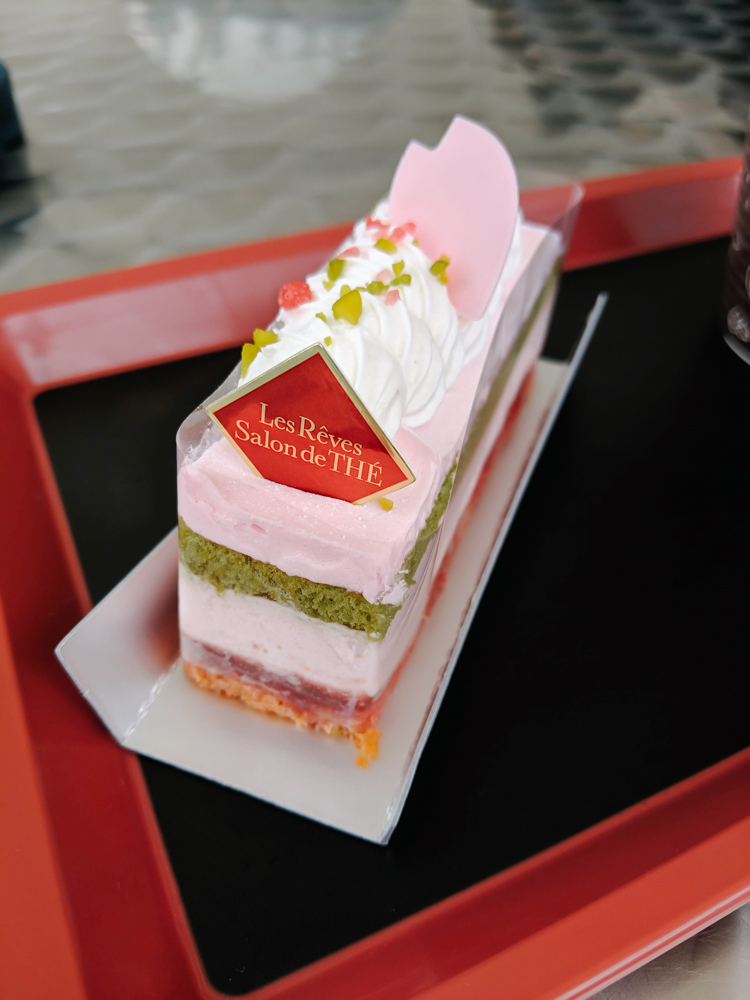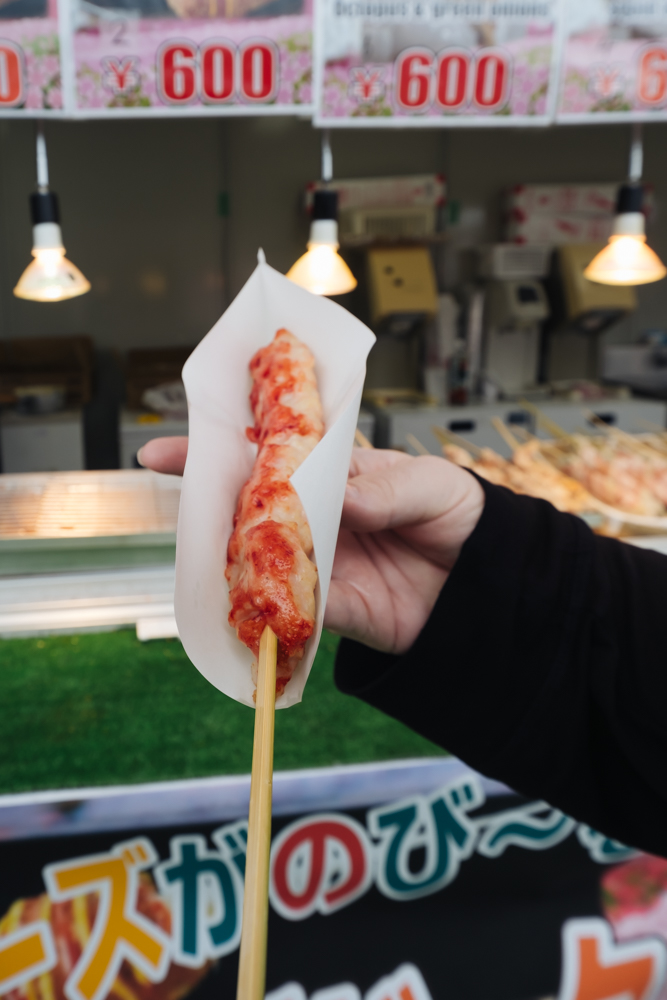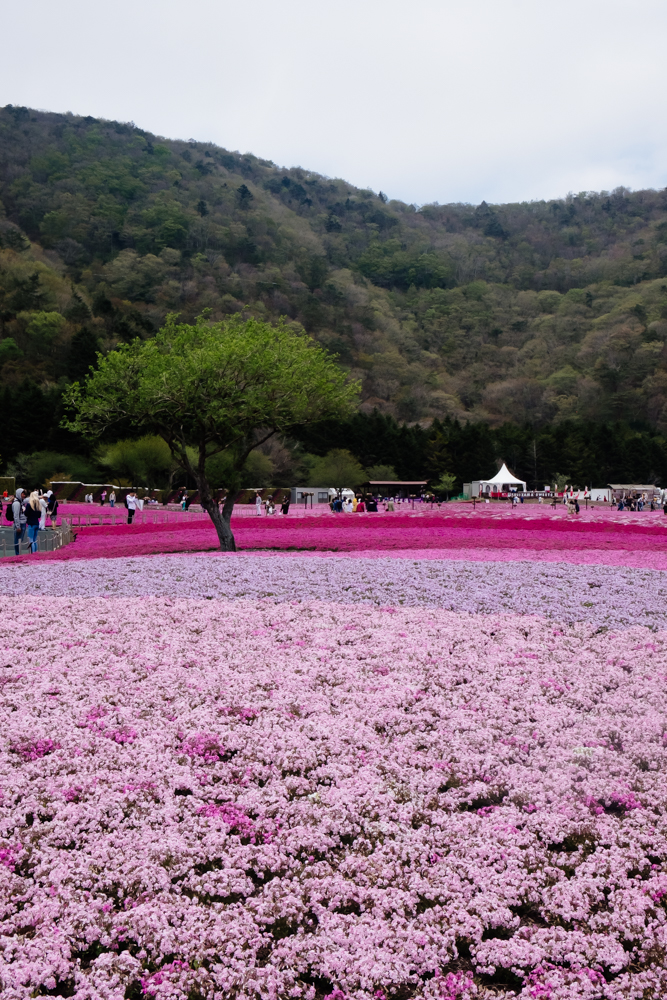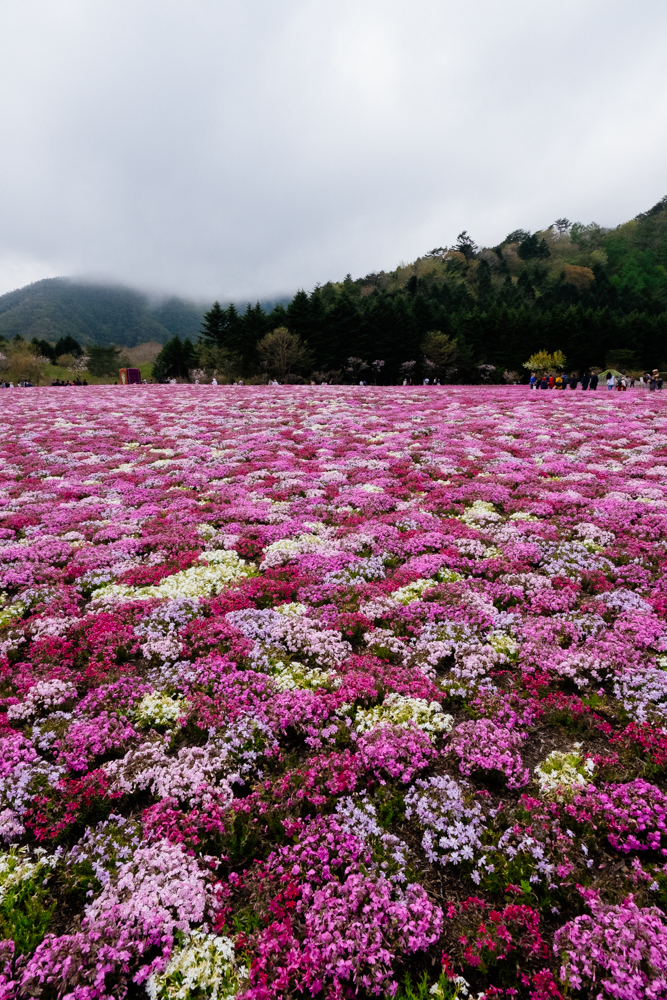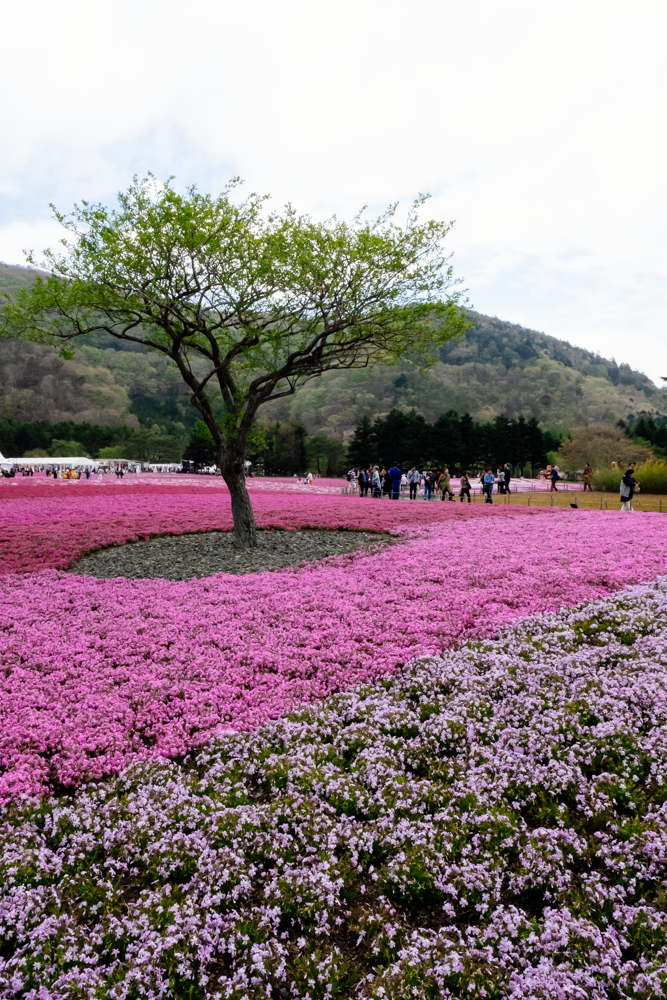Photos and planning info from the Mt Fuji’s biggest (and pinkest!) flower festival
From cherry blossoms to autumn leaves, Japan is devoted to enjoyment of the changing seasons. While I wish I could have planned an entire trip around the riotous color of Japan’s spring flower festivals, we did make it to the Fuji Shiba Sakura (or shibazakura) festival this spring– commonly known as the Pink Moss Festival.
The bright pink flowering moss (moss phlox) seen at this festival is actually originally native to the Eastern and Central US, but has been widely cultivated. True to Japanese form, it’s carefully tended and grown in colorful patterns for festival-goers to enjoy in April and May each year.
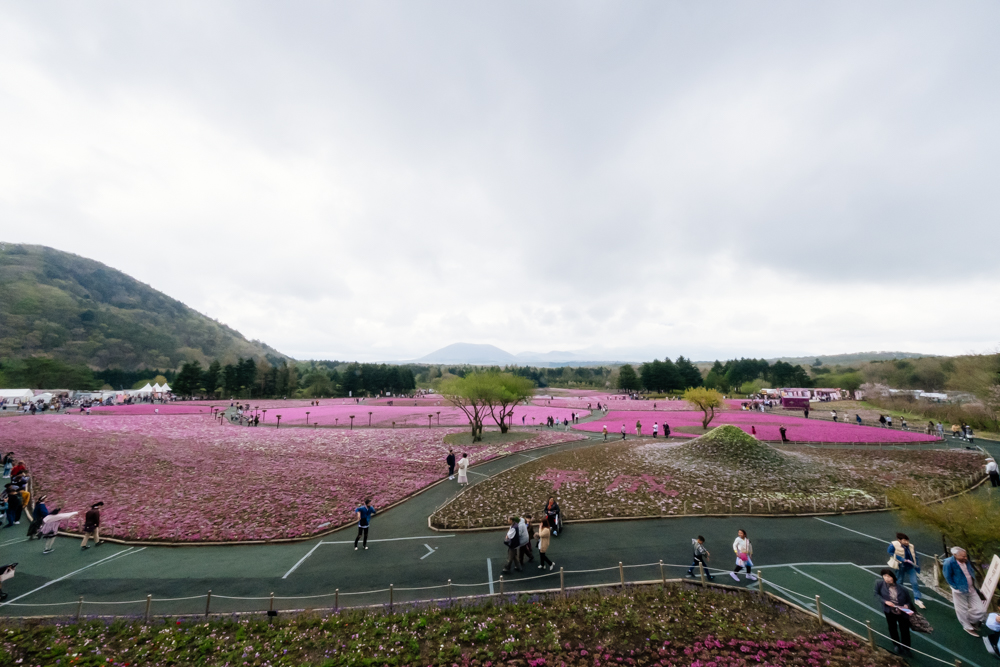
The park is arranged with wide walking paths and plenty of areas for photo ops. This photo was taken from the elevated platform, which can accumulate quite a line of serious photographers and selfie-takers alike, but provides a nice view of the park.
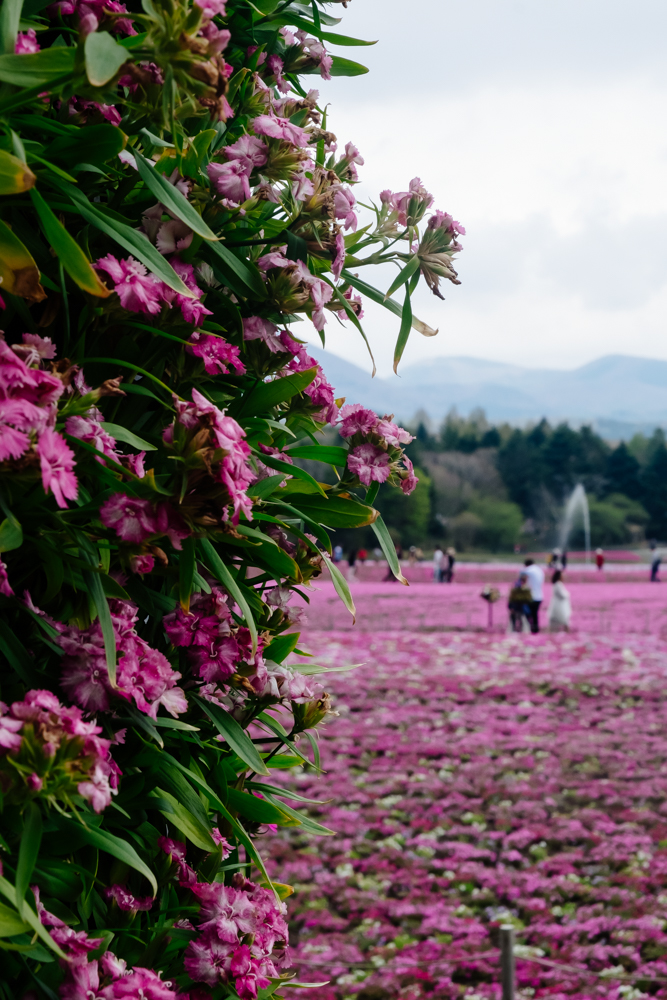

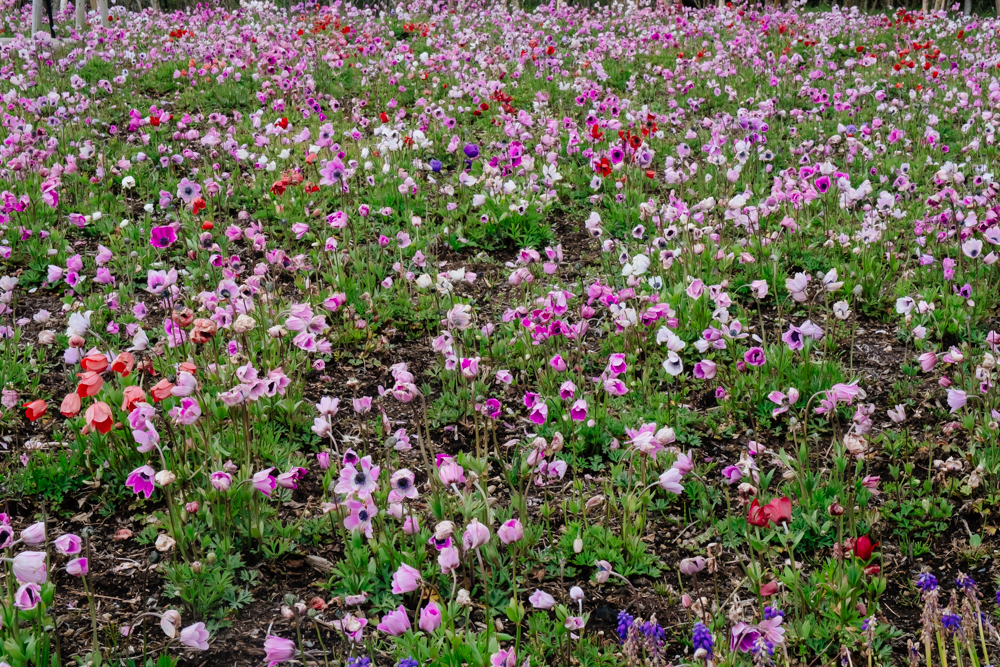
We visited on a cool, cloudy day, and were eventually driven back to the bus stop by the rain! The perils of spring weather. On a clear day, you can see Mt Fuji in the distance, but no such luck this time.
I can’t complain though, the flowers were beautiful. Even though real life doesn’t always match the Instagram version, I didn’t regret braving the cold and rain (it didn’t hurt that I had a giant Japanese bathtub waiting for me at my hotel!).
Food at the Pink Moss Festival
The Japanese are serious foodies, so of course there was plenty of amazing food available as well. Food vendors ranged from traditional Japanese festival food like yakisoba, pretty pink french-influenced cakes, and even a gyro stand. I’m not sure how to categorize the fusion-y crab meat kabob shown below, but it was surprisingly good.
Many of the vendors used the vending machine ticket system you commonly see in ramen shops. If you haven’t used one of these machines before, here’s your chance! The festival is very accommodating to foreign tourists, and most of the machines included English text. Just insert cash, press the buttons for the food and drink item(s) you’d like, then hand your tickets over at the counter.
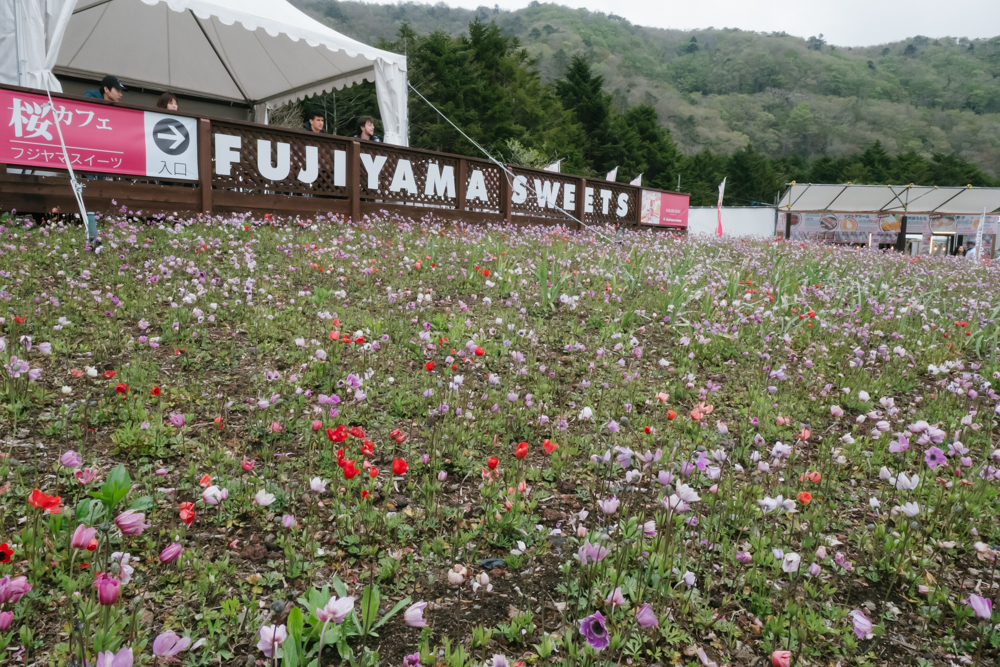
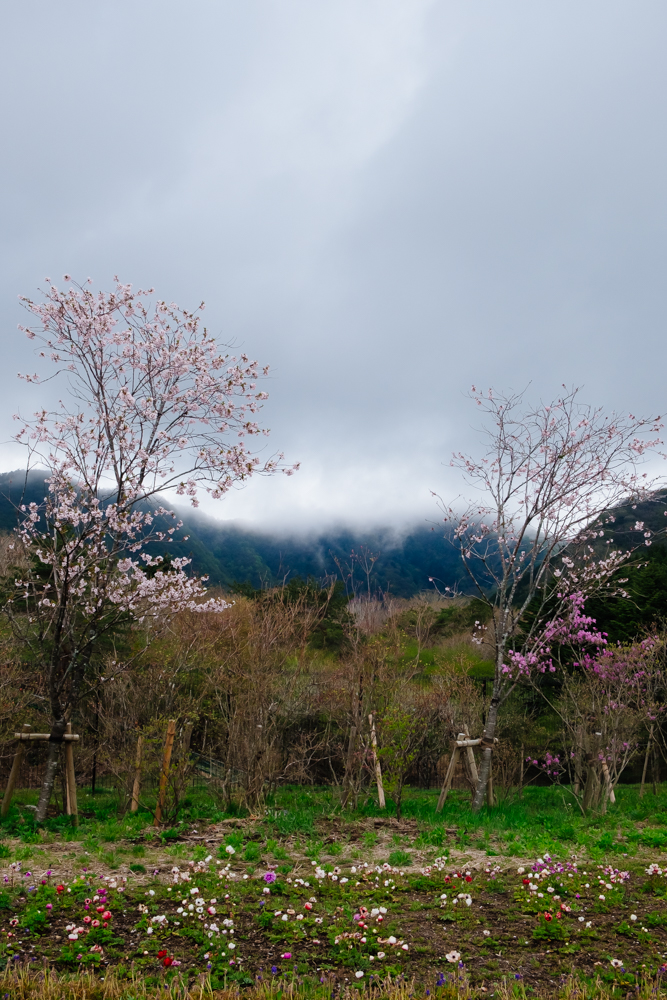


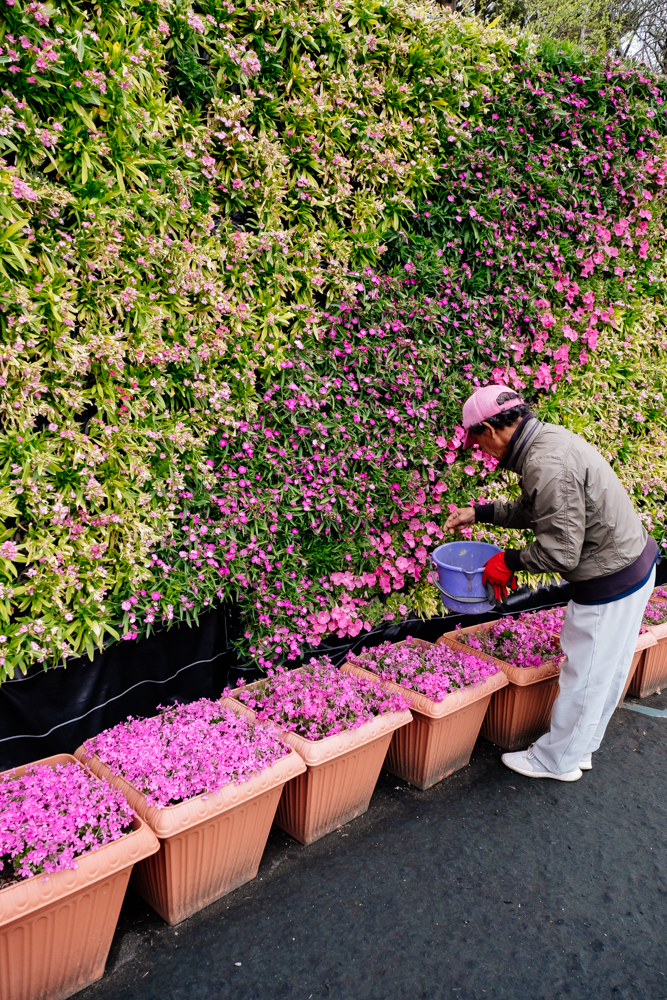
The flowers are immaculately cared for. This gardener was removing dead blossoms one by one!
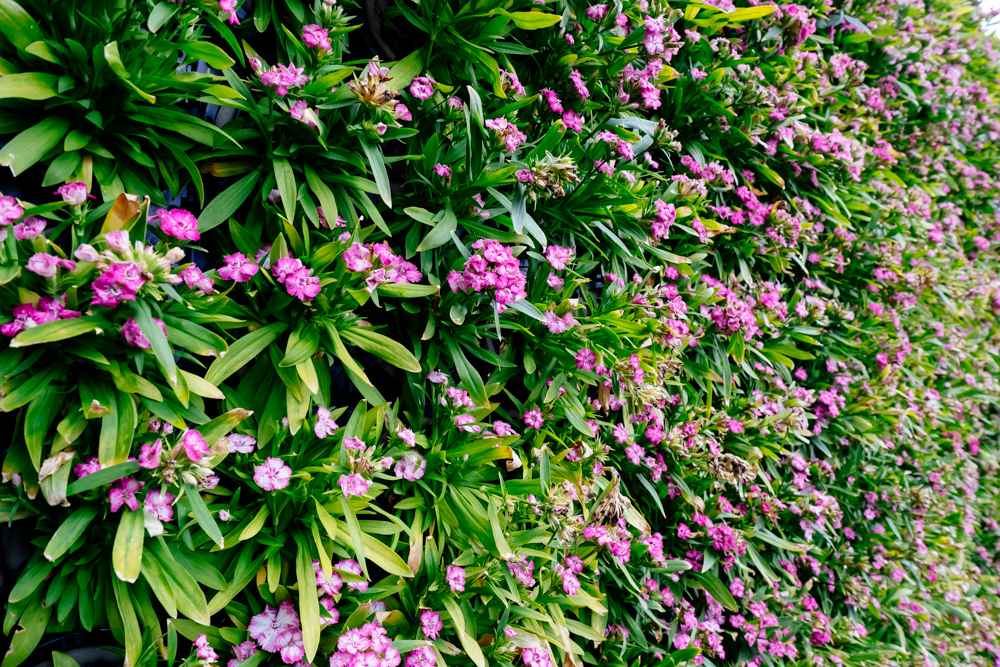
How to Get to the Pink Moss Festival
Option 1: The festival is accessible by car, and there is a limited amount of car parking. However, traffic can get snarled with so many attendees, so we’d recommend taking public transport.
Option 2: Accessing the festival via public transport is fairly easy:
- You’ll need to first take a train to Kawakuchiko station (multiple routes are available from Tokyo and elsewhere, including JR Pass eligible trains).
- From Kawaguchiko station, take the Shiba-Sakura liner bus (tickets available outside the station). It’s only about half an hour to the festival, and the bus runs once an hour.
Option 3: If you want to make it really easy, there are bus tours available to the Pink Moss festival, including some that will pick you up from your hotel in Tokyo. Much like snagging those elusive Ghibli Museum tickets, this can be a headache-free way to visit.
Planning for your visit:
- A visit to the festival can be done as a day trip from Tokyo, just be careful with your schedule so that you don’t miss the last bus back to Kawaguchiko station. Plan on spending a couple hours exploring the festival–more if you’re there for photography.
- Luggage storage is available at the station, but be aware that there’s limited space and it fills up fast. Because our hotel was on the outskirts of Kawaguchiko, dropping bags at the hotel beforehand wasn’t feasible. Finding that the station’s luggage storage was full, we asked around and found luggage storage at the gift shop across from the station.
- The Pink Moss festival is, unsurprisingly, very popular. Know that lines for the bus may exceed bus capacity. This can mean waiting another half hour or more for the next bus. Not a big deal, but keep this in mind if you’re on a strict schedule.
- Bring an umbrella! This is springtime, and rain is always a possibility. There are food tents and some other small areas to take shelter, but not enough for a festival’s worth of people. Also, remember that you’ll be at a higher elevation and the weather will be cooler than in Tokyo.
- There is plentiful food and drink, you shouldn’t worry about bringing anything unless you have diet restrictions. However, seating may be difficult to find when the festival is busy.
- Port-o-johns are also available (and clean!).
- Don’t forget to visit the gift shop! There’s a wide variety of souvenirs and food gifts. Even if you don’t have the luggage space for more souvenirs, it’s worth checking even just for fun.
- Finally, while arranging handicap friendly transportation might require a few extra steps, the festival itself is handicap accessible. Paths are paved, and flat and wide.

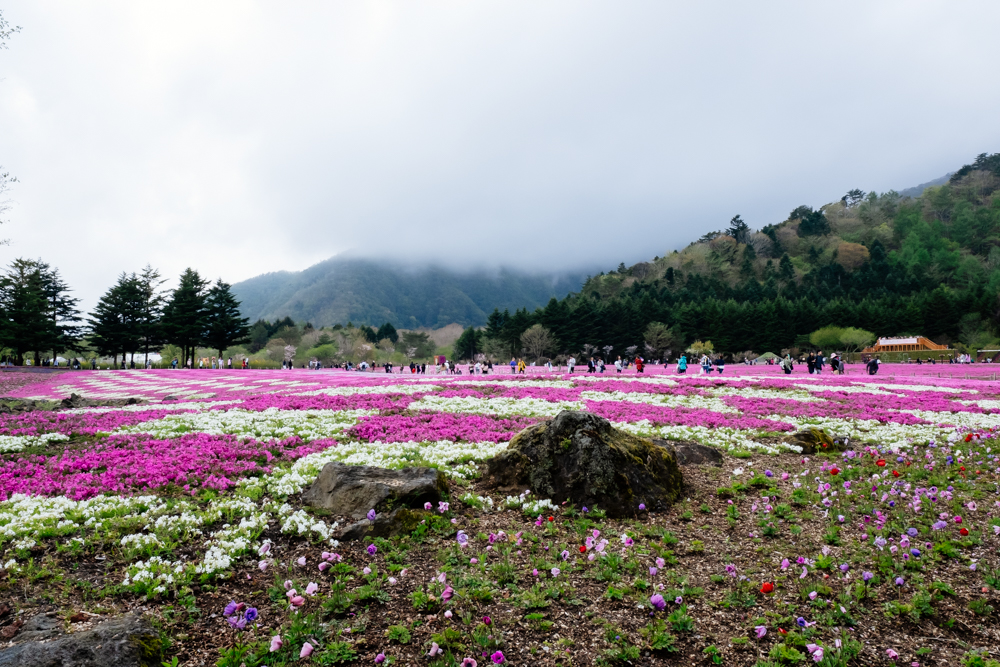
Related posts:

